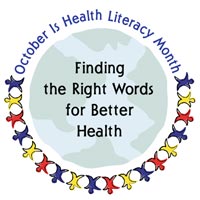Barbara Tator, a survivor of two double lung transplants and currently living with several chronic conditions, understands the importance of patient education materials.
When Barbara was first diagnosed with an illness, she encountered difficulty as she tried searching for health information on the internet. She was confused about where to find accurate information.
Barbara's doctor recommended checking the Mayo Clinic site as well as UHN's. She then visited the Paul B. Helliwell Patient & Family Library at Toronto Western Hospital (TWH), where she came across a brochure entitled,
"How to Review the Health Information You find on the Web"(D-5230). The librarian helped Barbara find other brochures containing clear information to get her started on a path to better understanding her health.
 Barbara feels that in order to be healthy you need guidelines, and she values the up-to-date information in the patient education brochures. They are easy to understand, and clear about what a person needs to know and do.
Barbara feels that in order to be healthy you need guidelines, and she values the up-to-date information in the patient education brochures. They are easy to understand, and clear about what a person needs to know and do.
"You can always get more information, if you are interested," Barbara says.
Numerous programs to choose from
Barbara often attends the TWH Monthly Talks, the Toronto General Hospital Health Talks and has participated in the Chronic Disease Self-Management Program (CDSMP) – put on by Patient and Family Education. Whenever Barbara is at the hospital, she keeps an eye open for new brochures at the Patient and Family Library as well as at the Family Health Team.
Barbara recently picked up another brochure "Health Literacy: Why is it important?" (D-5586). She plans to share with her mother the following tips:
When you visit with your health care provider:
- Write down your questions so you can remember everything.
- Bring all of your medicines, including vitamins and any over-the-counter or herbal remedies.
- Take a family member or trusted friend along to help you remember what your health care provider says.
- Ask questions if you do not understand. If you still are not sure about the message, ask your health care provider to repeat using different words.
- If you can repeat back the health information you receive in your own words, you understand it.
In an effort to ensure that patients always receive current and accurate health information, Patient and Family Education has launched a
new document submission process to help authors submit new brochures, send updates and request translations quickly and efficiently.
"We are excited to launch this customized content management system that will allow authors to not only submit documents, but also track the status of their documents online," says Rita Kang, Manager, Patient and Family Education. "Another great feature is that authors will also receive automated reminders when their brochures are due for an update according to our new policy."
Bruna Curti, Registered Nurse, TWH Day Surgery Unit, explained that "over the years we have found that patient education is an important and valuable tool that helps in the recovery after a surgical procedure.
"This electronic tool has also made it easier to create brochures and to make quick revisions as needed," Bruna says. "It should make it easier for anyone to devise important educational pamphlets for patients."
Learn more about how to create or submit educational resources for patients by contacting UHN Patient and Family Education today.
